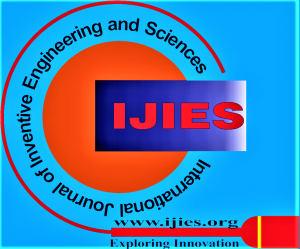Competing Interests/ Conflicts of Interest:
- Definition
- Author’s Responsibility for Conflicts of Interest
- Reviewer’s/Referee’s Responsibility for Conflicts of Interest
- Editor‘s/Editorial Board Member’s Responsibility for Conflicts of Interest
- Template for Conflicts of Interest
Definition:
Conflicts of interest may appear when an author, sponsor, or employer has financial, legal, commercial, or business affiliations with others involved in the research. Such conflicts arise when an individual has a vested interest in status, knowledge, relationships, money, or reputation. The conflicts of interest can impact the outcomes, which should be resolved immediately [1]. Editors, reviewers, and Authors must reveal all potential conflicts of interest.
Author’s Responsibility for Conflicts of Interest:
The corresponding author must disclose any conflicts of interest in the article upon submission to the International Journal of Inventive Engineering and Sciences (IJIES). It is imperative to disclose any financial support received from third parties and any other potential conflicts of interest. This information is crucial for maintaining transparency and ensuring all parties understand potential biases or influences clearly. Disclosing such information can compromise the integrity of the business or academic setting and may result in legal or ethical consequences. Therefore, it is essential to remain vigilant and forthcoming when disclosing financial support and potential conflicts of interest [2].
If authors have reason to believe that the editor or reviewer handling your submission may have conflicts of interest, they should promptly notify the journal. It is essential that all parties involved in the publication process, including authors, reviewers, and editors, maintain the highest level of transparency and ethical conduct to ensure the integrity of the scholarly record. Promptly reporting potential conflicts of interest will help uphold these standards and ensure that the publication process remains fair and unbiased [3].
It is imperative to note that there must not be any conflicting interests that need to be revealed. The corresponding author will provide this information in the cover letter or in the article itself without fail. The possible conflicts of interest may include:
- The author and editor had a prior association.
- The project is funded by a third party who wishes to remain anonymous and provides financial assistance.
- Having a financial or personal interest in the outcome of the research.
- An invention for which a patent application has been filed but has yet to be granted.
- Someone having a financial or personal interest in preventing the research from being conducted or made public.
Regardless of the peer review model, authors ensure to include a declaration statement for competing interests at the end of the article before the reference section that will be revealed in the publishing article utilising one of the following statements provided:
- The authors reveal no competing interests.
- The authors declare the following conflicts of interest (must write all competing interests).
- Authors have a confidential agreement that stops them from revealing any potential conflicts of interest related to this work.
Reviewer’s/Referee’s Responsibility for Conflicts of Interest:
The peer reviewers must terminate themselves from matters where substantial conflicts of interest exist, whether financial or otherwise. Failure to do so will result in potential impacts. The reviewers/referees must notify the editors of any conflicts of interest. The editors will examine the conflict statement while evaluating the reviewer’s recommendation. To maintain the integrity of the peer review process, reviewers/referees must follow it strictly.
Editor’s/Editorial Board Member’s Responsibility for Conflicts of Interest:
Being an editor or editorial board member of the International Journal of Inventive Engineering and Sciences (IJIES), it is the accountability to disclose any potential conflicts of interest, whether they pertain to financial considerations or other aspects. Such disclosures are significant to ensure the editorial choices are not influenced by personal conflicts of interest that may have or may be perceived to exist. By making such disclosures, editors/editorial board members are upholding the highest standards of professionalism, integrity, and transparency and helping to maintain the trust of readers and stakeholders. Therefore, it is incumbent upon all editors and members to be diligent in identifying and disclosing any conflicts of interest that may arise in the course of their work.
Being an editor or editorial board member of the journal, you must disclose your competing interests when participating in a peer review process. If such conflicts of interest exist, it is best to avoid steering the articles. This applies especially if you have collaborated with any of the authors in the past or are affiliated with the same institution. It is crucial to maintain transparency and avoid any potential conflicts of interest.
Template for Conflicts of Interest:
Conflicts of interest can be sensitive for authors, reviewers, and editors. The International Journal of Inventive Engineering and Sciences (IJIES) will support you in navigating this intricate matter. The template, which can be downloaded here, will help to guide conflicts of interest. The International Journal of Inventive Engineering and Sciences (IJIES) is fully dedicated to empowering you to maintain the highest levels of integrity and objectivity in all aspects of your work.
References:
- Investopedia – TROY SEGAL: Conflict of Interest Explained: Types and Examples
- WAME – Conflict of Interest in Peer-Reviewed Medical Journals
- COPE- Conflicts of interest / Competing interests
- Strictly inherited to the Editorial and Publishing Policies of Blue Eyes Intelligence Engineering and Sciences Publication (BEIESP)
